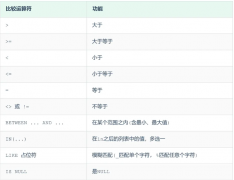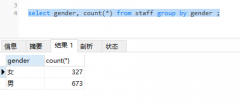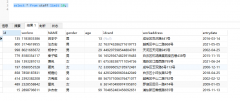MySQL: Select All Dates In a Range Even If No Records Present(MySQL:即使不存在记录,也选择范围内的所有日期)
问题描述
我有一个用户数据库.我想创建一个基于用户群增长的图表.我现在的查询是:
I have a database of users. I would like to create a graph based on userbase growth. The query I have now is:
SELECT DATE(datecreated), count(*) AS number FROM users
WHERE DATE(datecreated) > '2009-06-21' AND DATE(datecreated) <= DATE(NOW())
GROUP BY DATE(datecreated) ORDER BY datecreated ASC
这返回几乎我想要的.如果我们一天有 0 个用户,那一天不会作为 0 值返回,它只是被跳过,并返回至少有一个用户的第二天.我怎样才能得到类似(伪响应):
This returns almost what I want. If we get 0 users one day, that day is not returned as a 0 value, it is just skipped and the next day that has at least one user is returned. How can I get something like (psuedo-response):
date1 5
date2 8
date3 0
date4 0
date5 9
etc...
带有零的日期与其余日期按顺序显示在哪里?
where the dates with zero show up in sequential order with the rest of the dates?
谢谢!
推荐答案
希望你能解决剩下的问题.
I hope you will figure out the rest.
select * from (
select date_add('2003-01-01 00:00:00.000', INTERVAL n5.num*10000+n4.num*1000+n3.num*100+n2.num*10+n1.num DAY ) as date from
(select 0 as num
union all select 1
union all select 2
union all select 3
union all select 4
union all select 5
union all select 6
union all select 7
union all select 8
union all select 9) n1,
(select 0 as num
union all select 1
union all select 2
union all select 3
union all select 4
union all select 5
union all select 6
union all select 7
union all select 8
union all select 9) n2,
(select 0 as num
union all select 1
union all select 2
union all select 3
union all select 4
union all select 5
union all select 6
union all select 7
union all select 8
union all select 9) n3,
(select 0 as num
union all select 1
union all select 2
union all select 3
union all select 4
union all select 5
union all select 6
union all select 7
union all select 8
union all select 9) n4,
(select 0 as num
union all select 1
union all select 2
union all select 3
union all select 4
union all select 5
union all select 6
union all select 7
union all select 8
union all select 9) n5
) a
where date >'2011-01-02 00:00:00.000' and date < NOW()
order by date
与
select n3.num*100+n2.num*10+n1.num as date
你会得到一列数字从 0 到 max(n3)*100+max(n2)*10+max(n1)
you will get a column with numbers from 0 to max(n3)*100+max(n2)*10+max(n1)
由于这里我们将最大 n3 设为 3,SELECT 将返回 399,加上 0 -> 400 条记录(日历中的日期).
Since here we have max n3 as 3, SELECT will return 399, plus 0 -> 400 records (dates in calendar).
您可以通过限制动态日历来调整它,例如,从 min(date) 到 now().
You can tune your dynamic calendar by limiting it, for example, from min(date) you have to now().
这篇关于MySQL:即使不存在记录,也选择范围内的所有日期的文章就介绍到这了,希望我们推荐的答案对大家有所帮助,也希望大家多多支持编程学习网!
本文标题为:MySQL:即使不存在记录,也选择范围内的所有日期


- 如何将 SonarQube 6.7 从 MySQL 迁移到 postgresql 2022-01-01
- 使用 Oracle PL/SQL developer 生成测试数据 2021-01-01
- 如何使用 pip 安装 Python MySQLdb 模块? 2021-01-01
- 更改自动增量起始编号? 2021-01-01
- SQL 临时表问题 2022-01-01
- 远程 mySQL 连接抛出“无法使用旧的不安全身份验证连接到 MySQL 4.1+"来自 XAMPP 的错误 2022-01-01
- 导入具有可变标题的 Excel 文件 2021-01-01
- 以一个值为轴心,但将一行上的数据按另一行分组? 2022-01-01
- 在SQL中,如何为每个组选择前2行 2021-01-01
- 如何将 Byte[] 插入 SQL Server VARBINARY 列 2021-01-01









